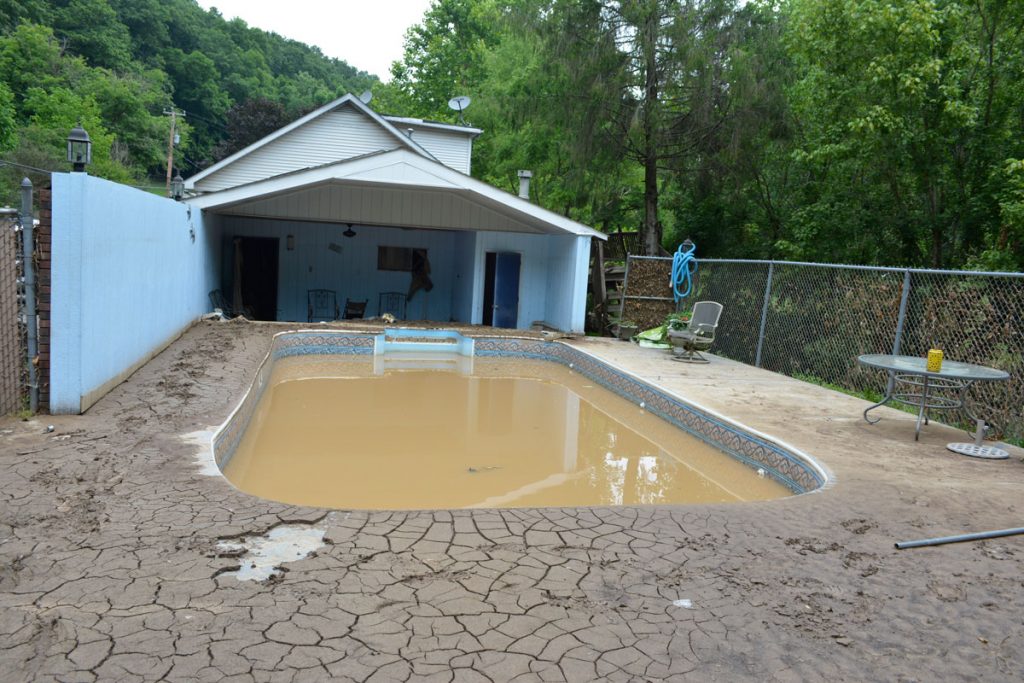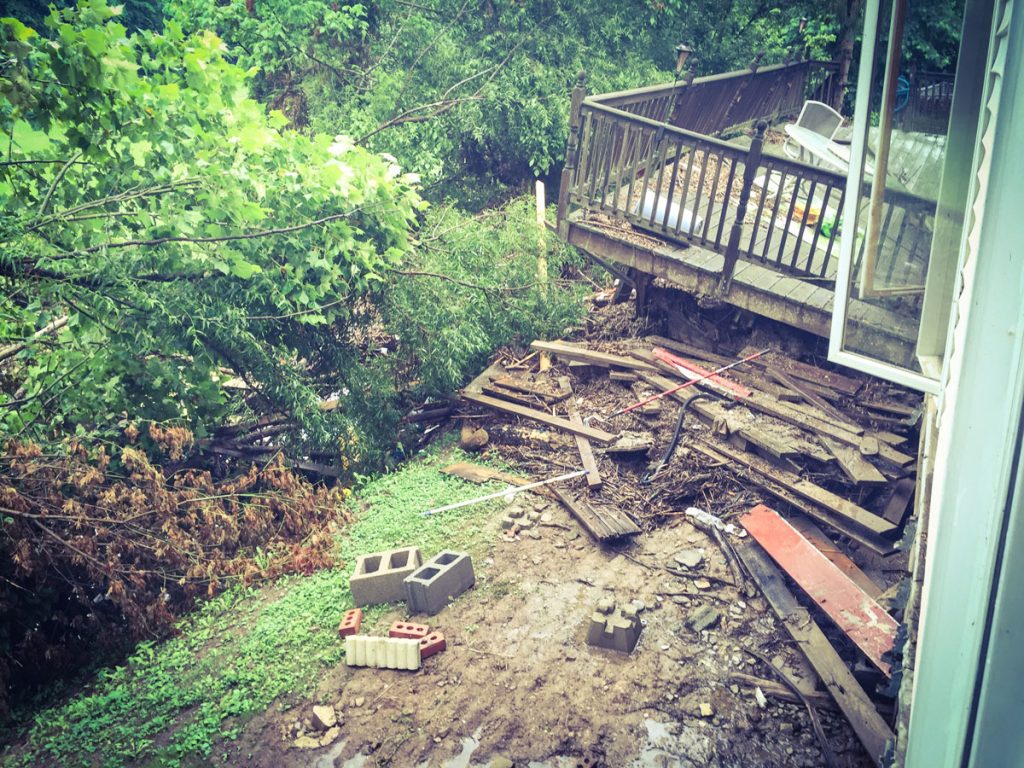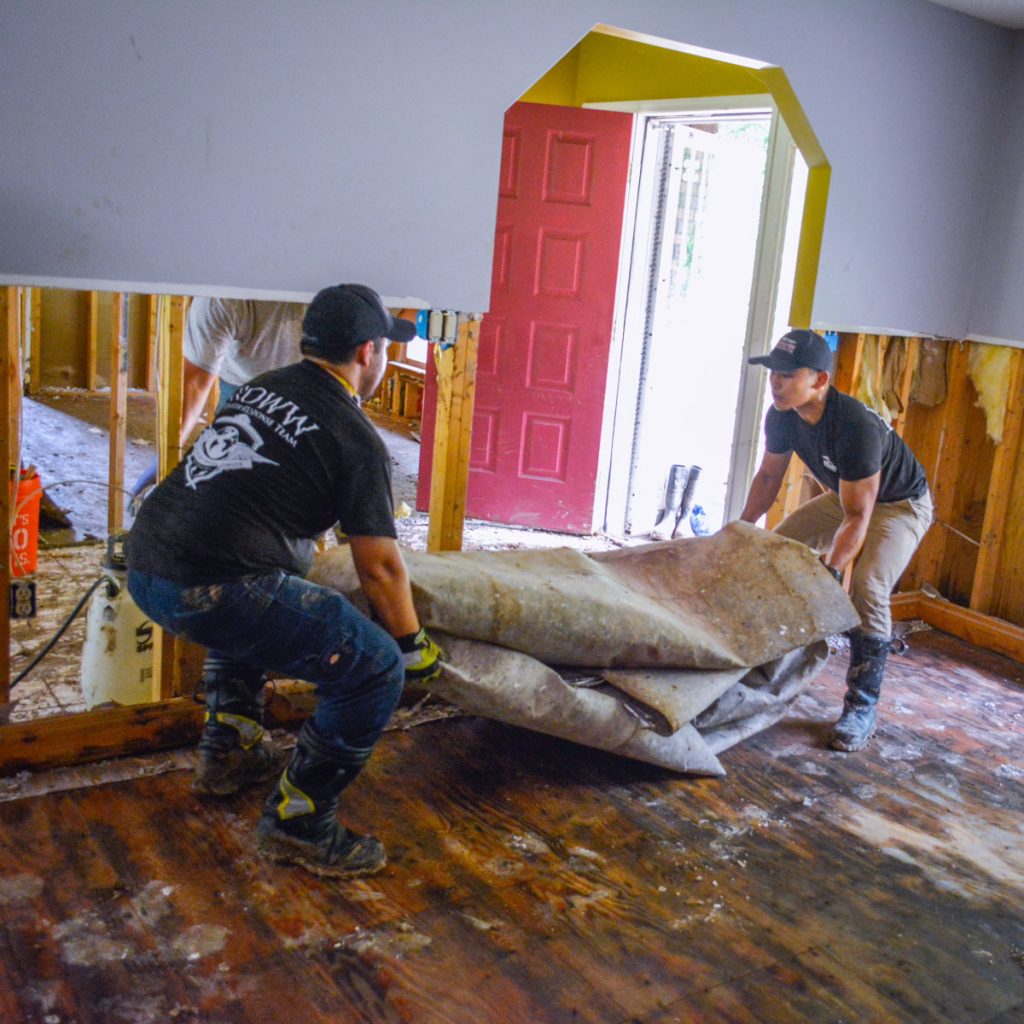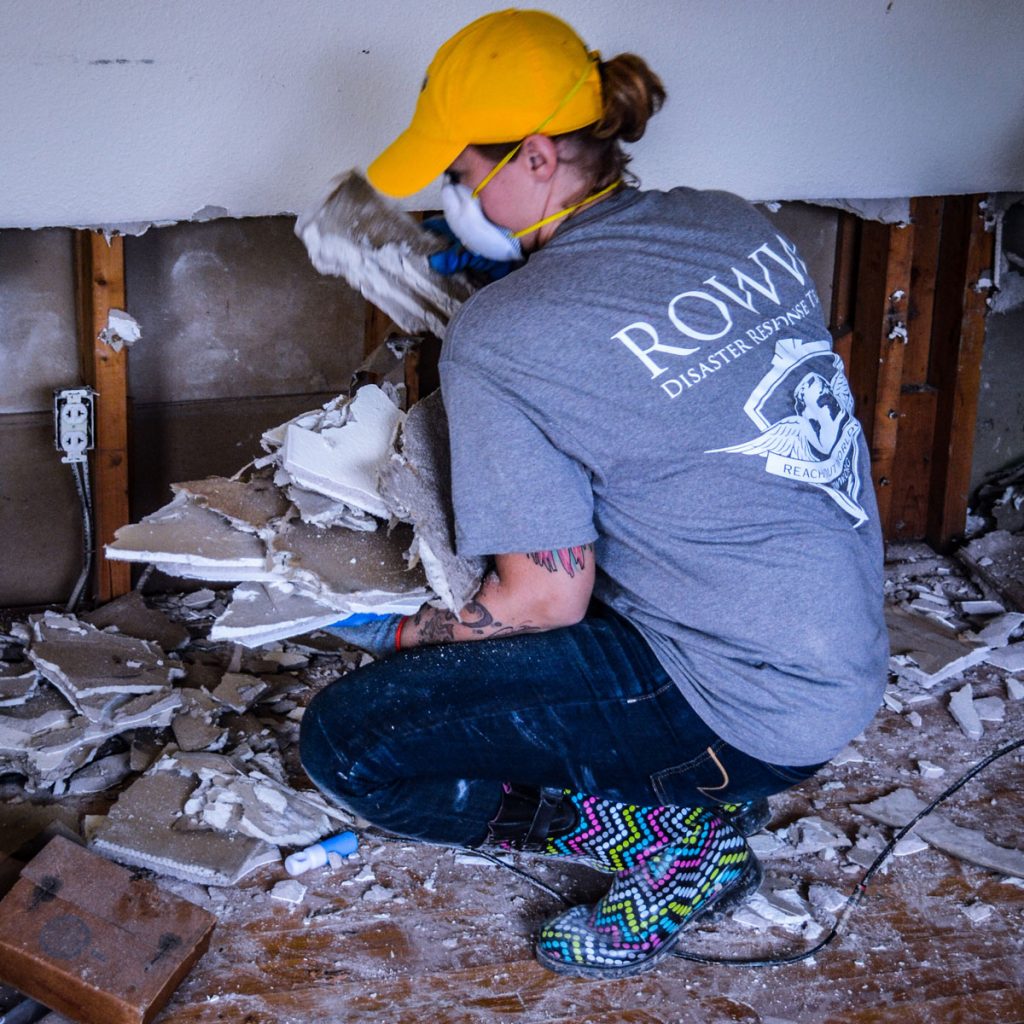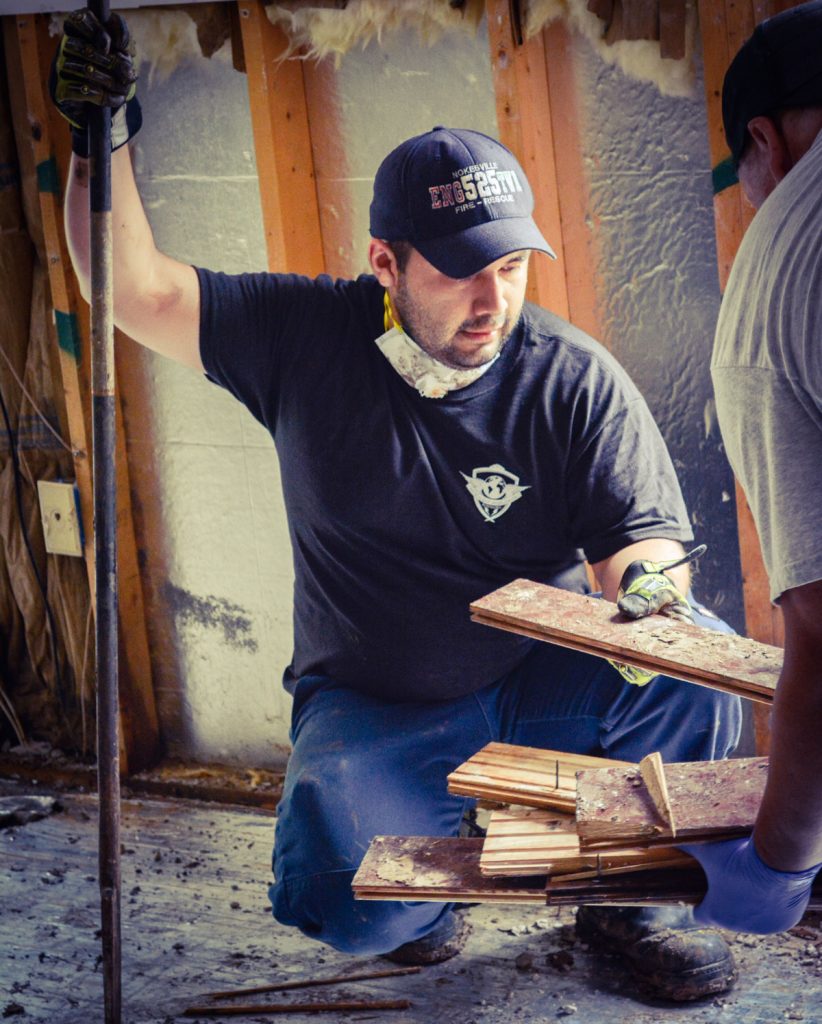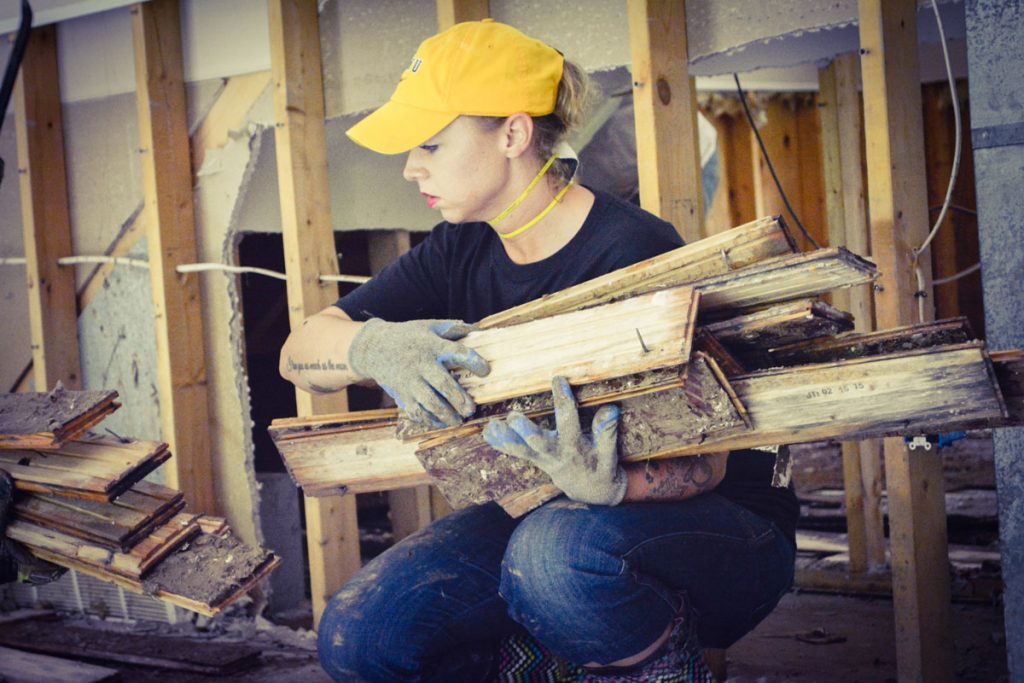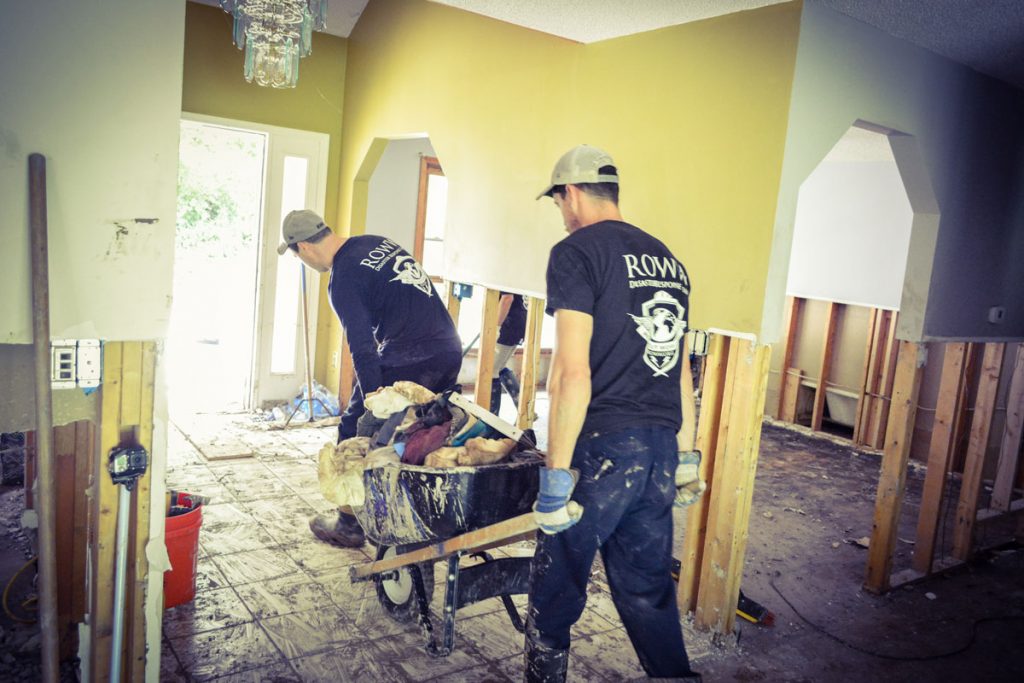On June 23, 2016, thunderstorms brought torrential rain to much of West Virginia, resulting in accumulations of up to 10 in (250 mm) in 12-24 hours. According to meteorologists at the National Weather Service, this rainfall qualifies as a 1,000-year event for parts of Fayette, Nicholas, and Greenbrier Counties. In addition to the torrential rain, the storms produced an EF1 tornado near Kenna in Jackson County.
The tremendous rainfall produced widespread and destructive flash floods in the state. Flooding in White Sulphur Springs destroyed many homes and swept some clean off their foundations. The town of Rainelle was especially hard hit, and was described as looking like “a war zone.”
About 500 homes were severely damaged or destroyed in Roane County. In Clay County, the communities of Procious, Camp Creek, and others were left in ruins. At least 60 roads were shut down, many of them swept away. Multiple bridges across the state were destroyed. In Nicholas County, the Cherry River flooded much of Richwood, forcing the evacuation of a nursing home. Homes in low-lying areas of the county were flooded up to the roof. Electric utilities reported at one point that 500,000 customers were left without power from the floods.
On June 27, 2016, Mike Buresh had a conversation with Jenny Ganaway, West Virginia VOAD chairperson. I expressed interest to deploy our team and Jenny said that Roane County was in need of assistance. Upon arrival to Roane County on June 29, 2016, I met with the Roane County Emergency Manager Melissa Gilbert to discuss the needs of the county. Also with Melissa’s help, I secured housing for the team at the Roane County High School. Over the next two days, I toured the affected county, met with the National Guard leadership and Melissa on any unmet need of the county. Through those conversations, we determined we would move our base of operation to Walton, West Virginia to be closer to the hardest hit areas in Roane and Kanawha counties. Once I arrived in Walton, I met with Robert Looney, Walton VFD Chief and inquired about available housing. He made a single phone call and was able to secure lodging with Lighthouse Ministries, Tim Ashley, pastor. The church supplied us with a base of operations, sleeping accommodations, showers and between the American Red Cross and the parishioners of Lighthouse Ministries, we were fed quite well. Over the next week, Team ROWW completed 7 Muck and Gut operations in Roane and Kanawha counties with total volunteer hours of 496. Total houses that were cleaned up was 7.
Crisis Cleanup was used as the central database for all work orders supplied to the responding agencies.

